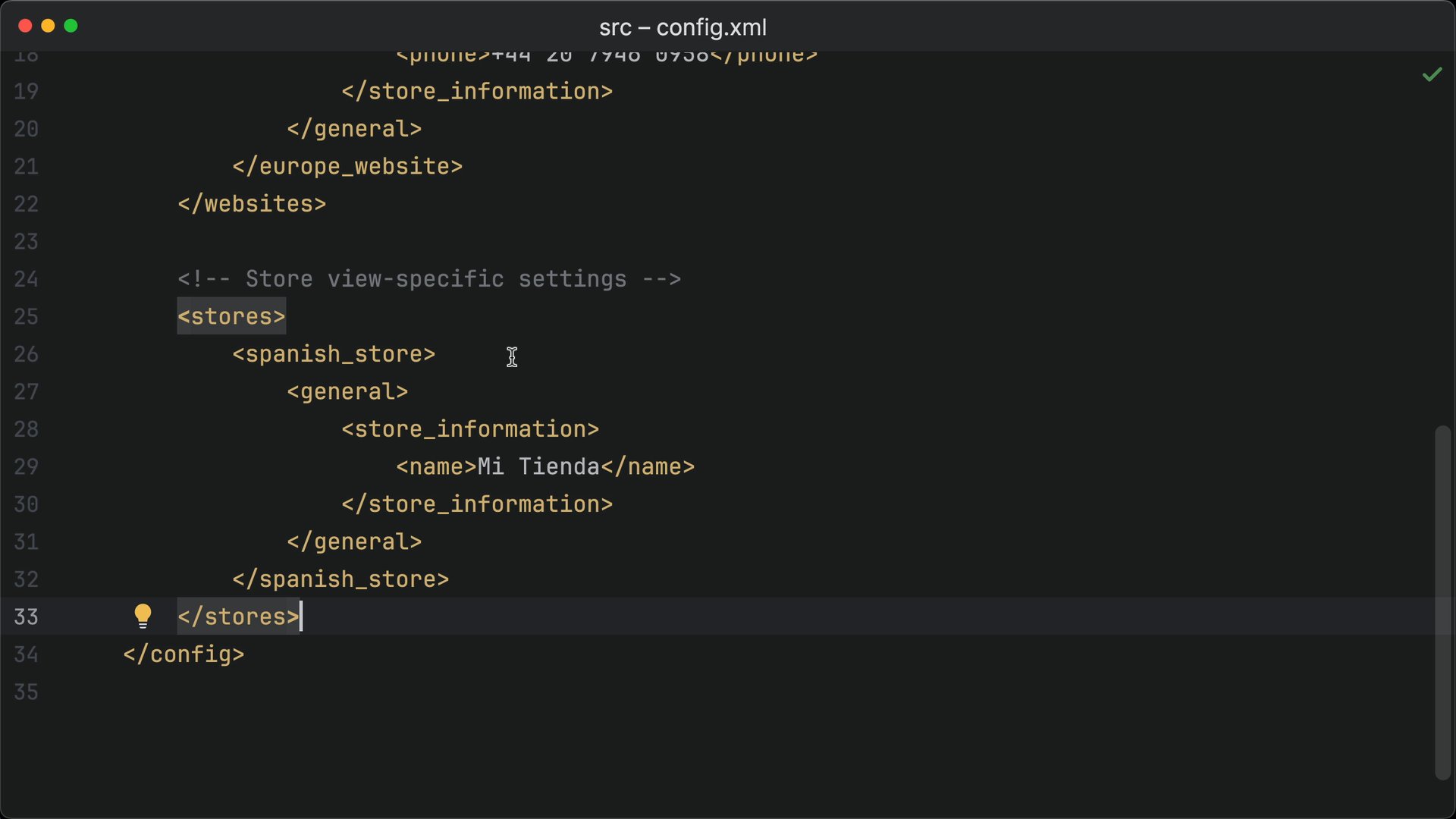Configure scope with XML in Magento
Learn how to configure scope in Magento XML by using default, websites, and stores nodes for layered store settings.
Lesson Content
XML scope structure
In Magento's XML files, scope is implemented through specific node structures that map directly to the scope hierarchy:
<?xml version="1.0"?>
<config xmlns:xsi="<http://www.w3.org/2001/XMLSchema-instance>" xsi:noNamespaceSchemaLocation="urn:magento:module:Magento_Store:etc/config.xsd">
<!-- Global default settings -->
<default>
<!-- Configuration goes here -->
</default>
<!-- Website-specific settings -->
<websites>
<website_code>
<!-- Configuration goes here -->
</website_code>
</websi...

Join the discussion!
Comments
Want to comment on this lesson?
Enroll in this course to leave comments.